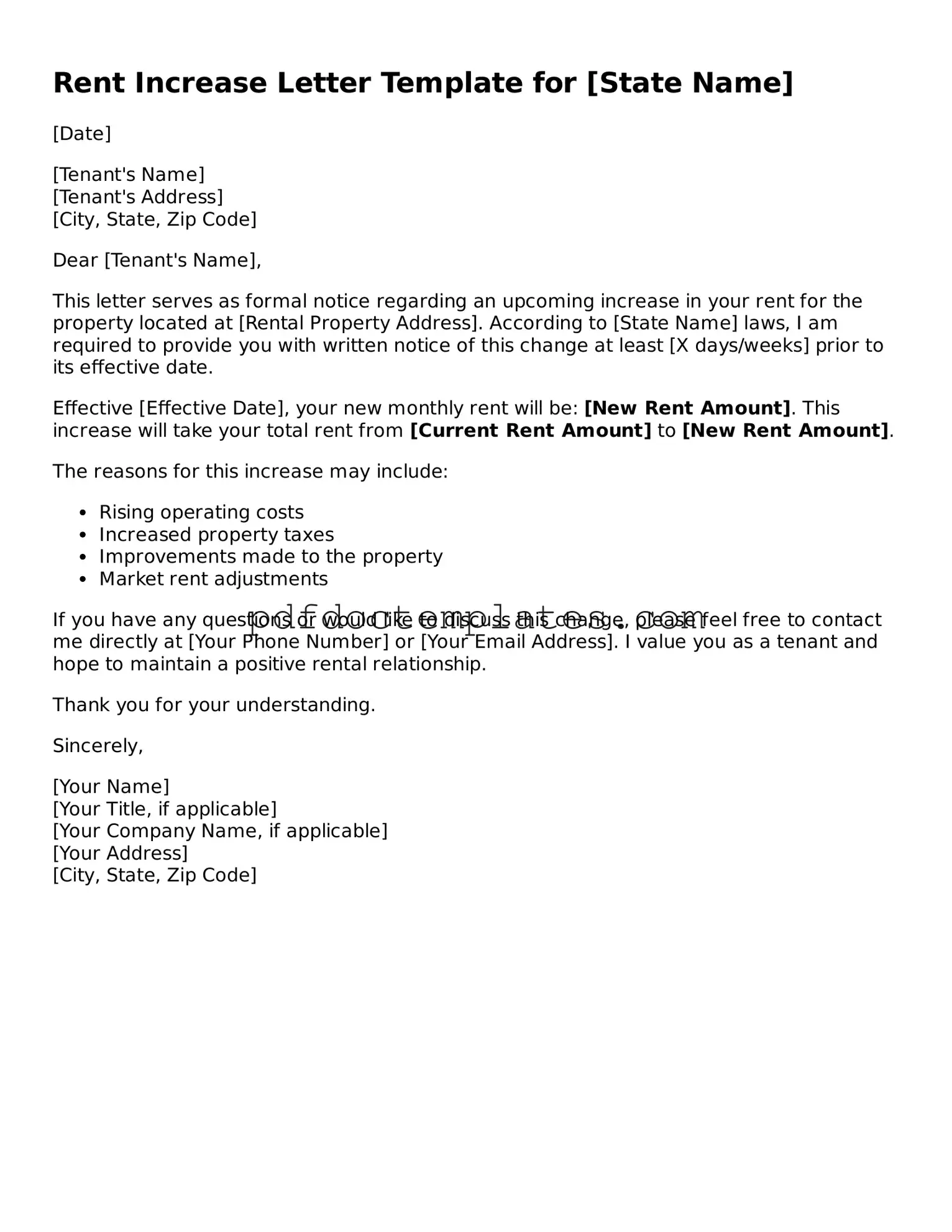Rent Increase Letter Template for [State Name]
[Date]
[Tenant's Name]
[Tenant's Address]
[City, State, Zip Code]
Dear [Tenant's Name],
This letter serves as formal notice regarding an upcoming increase in your rent for the property located at [Rental Property Address]. According to [State Name] laws, I am required to provide you with written notice of this change at least [X days/weeks] prior to its effective date.
Effective [Effective Date], your new monthly rent will be: [New Rent Amount]. This increase will take your total rent from [Current Rent Amount] to [New Rent Amount].
The reasons for this increase may include:
- Rising operating costs
- Increased property taxes
- Improvements made to the property
- Market rent adjustments
If you have any questions or would like to discuss this change, please feel free to contact me directly at [Your Phone Number] or [Your Email Address]. I value you as a tenant and hope to maintain a positive rental relationship.
Thank you for your understanding.
Sincerely,
[Your Name]
[Your Title, if applicable]
[Your Company Name, if applicable]
[Your Address]
[City, State, Zip Code]
